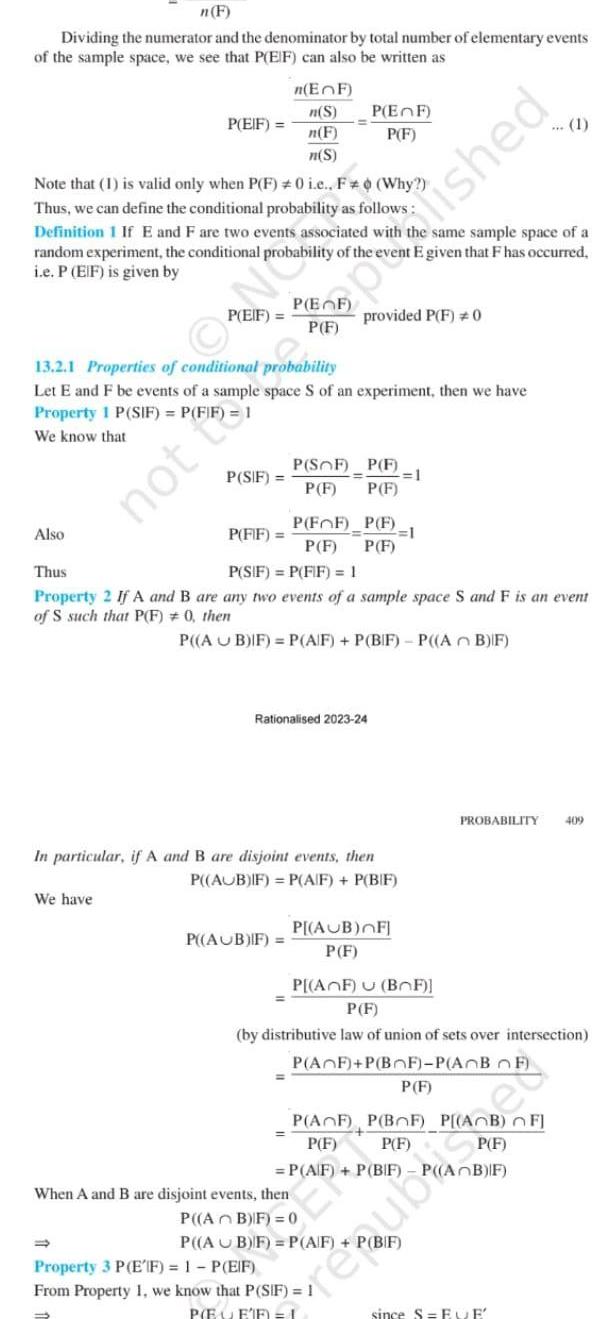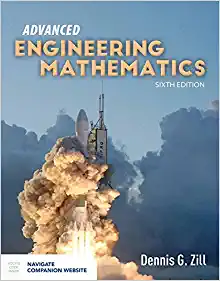Answered step by step
Verified Expert Solution
Question
1 Approved Answer
n(F) Dividing the numerator and the denominator by total number of elementary events of the sample space, we see that P(EIF) can also be

n(F) Dividing the numerator and the denominator by total number of elementary events of the sample space, we see that P(EIF) can also be written as n(EF) n(S) P(EF) P(EIF) = n(F) P(F) n(S) Note that (1) is valid only when P(F) #0 i.e., F# (Why?) Thus, we can define the conditional probability as follows: . (1) Definition 1 If E and F are two events associated with the same sample space of a random experiment, the conditional probability of t i.e. P (EIF) is given by E given that F has occurred, not to polished P(EIF) 13.2.1 Properties of conditional probability provided P(F) #0 Let E and F be events of a sample space S of an experiment, then we have Property 1 P(SIF) = P(F)F) = 1 We know that Also P(SOF) P(F) P(SIF) = =1 P(F) P(F) P(FOF) P(F) P(FIF) = P(F) P(F) Thus P(SIF) = P(FIF) = 1 Property 2 If A and B are any two events of a sample space S and F is an event of S such that P(F) +0, then P((AUB)|F) = P(AF) + P(BIF) - P((AB)|F) Rationalised 2023-24 In particular, if A and B are disjoint events, then We have P((AUB)IF) = P(A|F) + P(BIF) P[(AUB)F] P((AUB)|F) = P(F) PROBABILITY 409 P[(AOF) (BOF)] P(F) (by distributive law of union of sets over intersection) P(AOF)+P(BOF)-P(ABF) P(F) P(AOF) P(BOF) P[(AB)F] P(F) P(F) P(F) = P(AF) + P(BIF) - P((AB)|F) When A and B are disjoint events, then P((AB)|F)=0 P((AB)F) = P(A|F) + BIF) Property 3 P(EIF) = 1 - P(EIF) From Property 1, we know that P(SIF) = 1 P(EEE)=1 since SEUE
Step by Step Solution
There are 3 Steps involved in it
Step: 1

Get Instant Access to Expert-Tailored Solutions
See step-by-step solutions with expert insights and AI powered tools for academic success
Step: 2

Step: 3

Ace Your Homework with AI
Get the answers you need in no time with our AI-driven, step-by-step assistance
Get Started


